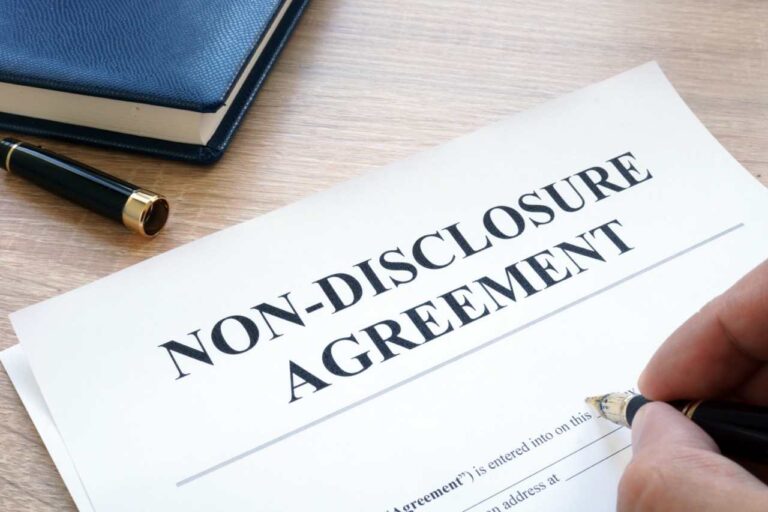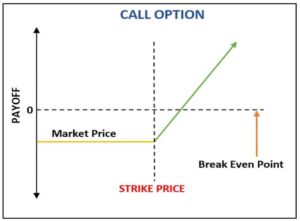Non-disclosure agreement (NDA): meaning, types and more

In today’s business world, companies often have confidential information that they need to protect from being leaked to competitors or the public. One way they do this is by using non-disclosure agreements (NDAs). NDAs are legal contracts that prevent individuals from sharing confidential information with others without authorization.
This article will provide a comprehensive understanding of what NDAs are, their meaning, types, and their importance in protecting businesses’ confidential information.
What is a Non-disclosure Agreement (NDA)?
A non-disclosure agreement (NDA) is a legal contract that establishes a confidential relationship between two or more parties. It is also known as a confidentiality agreement (CA). The purpose of an NDA is to prevent the disclosure of confidential information by one or both parties to others without authorization. The confidential information could be anything that is not publicly known, including trade secrets, proprietary information, business plans, financial information, customer data, and other sensitive information.
An NDA typically outlines the terms and conditions under which the confidential information is shared, the duration of the agreement, and the consequences of violating the agreement. The agreement is usually mutual, meaning that both parties are bound by the same terms and conditions. NDAs can be used in various contexts, such as in business transactions, employment agreements, and collaborations with third parties.
Types of non-disclosure agreements and their applications
There are different types of non-disclosure agreements that can be used depending on the context and purpose of the agreement. Some of the common types include:
1. Unilateral NDA
This type of NDA is used when one party discloses confidential information to another party, and the recipient is bound by the terms and conditions of the agreement.
For example, a company may use a unilateral NDA when disclosing confidential information to a consultant or a vendor.
2. Mutual NDA
This type of NDA is used when both parties disclose confidential information to each other, and both parties are bound by the terms and conditions of the agreement.
Mutual NDAs are commonly used in mergers and acquisitions, joint ventures, and collaborations.
3. Multilateral NDA
This type of NDA is used when three or more parties disclose confidential information to each other, and all parties are bound by the terms and conditions of the agreement.
Multilateral NDAs are typically used in complex business transactions involving multiple parties.
4. One-way NDA
This type of NDA is used when only one party discloses confidential information, and the recipient is bound by the terms and conditions of the agreement.
One-way NDAs are commonly used in employment agreements, where the employer discloses confidential information to the employee.
5. Two-way NDA
This type of NDA is used when both parties disclose confidential information, and both parties are bound by the terms and conditions of the agreement.
Two-way NDAs are commonly used in research and development collaborations.
Importance of NDAs in protecting confidential information
NDAs are crucial in protecting confidential information for businesses, as they provide legal protection against the unauthorized disclosure of sensitive information. By signing an NDA, parties agree to keep confidential information confidential and not to use it for their benefit or disclose it to others without permission. This ensures that businesses can share their confidential information with third parties, such as consultants, vendors, or potential partners, without fear of losing control over the information.
NDAs are particularly important in protecting trade secrets and other proprietary information that give businesses a competitive advantage. Without NDAs, competitors could gain access to such information, potentially harming the business’s competitiveness. Additionally, NDAs can also help businesses protect their intellectual property, such as patents, copyrights, and trademarks.
Legal considerations when drafting and enforcing NDAs
When drafting and enforcing NDAs, there are several legal considerations that businesses and individuals should keep in mind. Firstly, NDAs must be drafted carefully to ensure that they are enforceable. This includes ensuring that the agreement is clear and specific in defining the confidential information that is covered by the agreement, the duration of the agreement, and the consequences of violating the agreement.
Secondly, businesses and individuals must ensure that the NDA is signed by all parties involved in the exchange of confidential information. This includes employees, contractors, and third parties. The agreement should also be reviewed and updated regularly to ensure that it remains relevant and effective.
In case of a breach of the NDA, businesses and individuals should be prepared to take legal action to enforce the agreement. This may include seeking an injunction to prevent further disclosure of the confidential information or seeking damages for any losses suffered as a result of the breach.
Best practices for businesses and employees in using NDAs
There are several best practices that businesses and employees should follow when using NDAs. Firstly, it is essential to ensure that NDAs are necessary and appropriate for the situation. NDAs should only be used when there is a genuine need to protect confidential information, and other forms of protection, such as patents or copyrights, are not applicable.
Secondly, NDAs should be drafted clearly and specifically to avoid any ambiguity or misunderstandings. The agreement should clearly define the confidential information covered by the NDA, the duration of the agreement, and the consequences of violating the agreement.
Thirdly, businesses should ensure that their employees and contractors are aware of the importance of NDAs and the consequences of violating them. This includes providing training on the proper handling of confidential information and conducting background checks on individuals who will have access to sensitive information.
Businesses should review and update their NDAs regularly to ensure that they remain relevant and effective. This includes reviewing the confidentiality requirements in contracts with third-party vendors and suppliers.
Conclusion
Non-disclosure agreements are an essential tool for businesses to protect their confidential information. NDAs come in different types and serve various purposes, such as safeguarding trade secrets, protecting intellectual property, and maintaining the confidentiality of proprietary information.
Without these agreements, companies may be at risk of losing their competitive edge, and their confidential information may be shared with competitors. Therefore, businesses must take the necessary measures to ensure that their confidential information is protected by using NDAs, and employees must abide by the agreements they sign to avoid any legal consequences.
Don't miss a thing. Follow us on Telegram and Follow us on WhatsApp. If you love videos then also Subscribe to our YouTube Channel. We are on Twitter as MakeMoneyDotNG.





